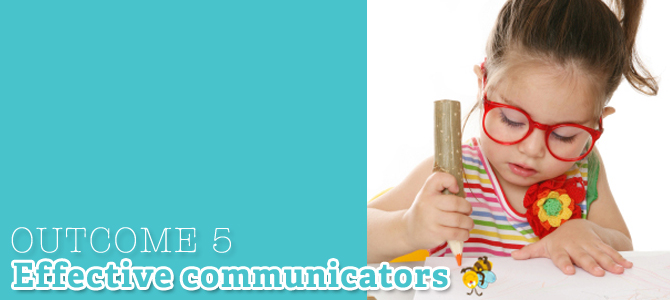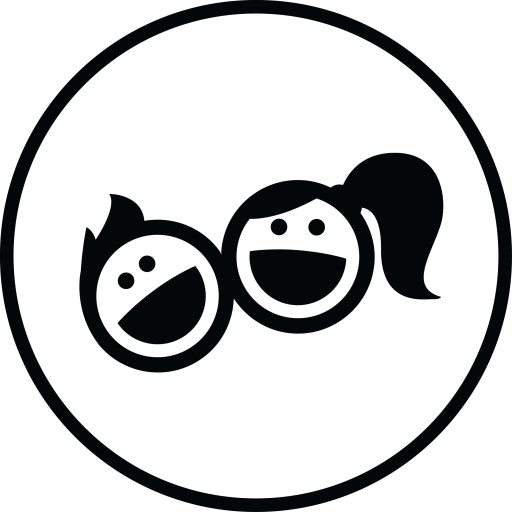OUTCOME 5: Children are effective communicators

5.2 Engage with a range of texts and gain meaning from these texts
- Engages with, listens to and responds to a variety of texts, e.g. fiction, non-fiction, poetry, multi-media texts, with familiarity and understanding of their format.
- Share, illustrate, re-enact or re-tell stories of different cultures, e.g. traditional tales, dreamtime stories
- Sings and chants rhymes, jingles and songs
- Attempts to ‘read’ and shares texts for personal purposes
- Explores texts from a range of different perspectives and begin to analyse the meanings
- Actively uses, engages with and shares his/her enjoyment of language and literature
- Investigates words and word meanings
- Engage in active construction of meaning from text with teacher support, e.g. makes connections between text and own experiences and ideas, makes predictions
- Recognises and recalls key details or literal information, e.g. who, what ,where
- Reflect on cause-effect relationships and make inferences, e.g. why, how, what if, what might happen next
- Predict and sequence events in text with teacher support
- Asks for information or clarification
- Identifies visual elements of a variety of electronic texts, e.g. pictures, photographs, videos, e-books, multi-media
- Understand that there are different text types that have different purposes, e.g. lists, procedure, recount, narrative
- Understand that information can be found in non-fiction texts to provide answers to questions
- Identify some elements of books and conventional texts, e.g. character, setting, title, beginning, ending
- Engage in activities that involve representation of meaning in response to text, e.g. re-telling, drawing, painting, music, sculpture, dance, symbolic play, role-play
- Carry out simple 2 step instructions
- Recognise components of text, e.g. letters, words, sentence, pictures, page, title, author, illustrator
- Explore early concepts of print including that print is constant, and text sequence, and directionality, e.g. text goes left-right and top-bottom, where to start reading, pictures on subsequent pages of text are related
- Recognises own written name
- Shows understanding of and uses appropriate comparative language related to quantity length, capacity, mass and time, such as : more than, less than, heavier, lighter, bigger, smaller, shorter, taller, longer
- Shows understanding of and uses appropriate spatial and positional language such as on, under, through, behind, next to, on top of, over, in front, out, forwards, backwards, across, down, up
- Responds to the ways in which aspects such as colour, line, shape and design are used to communicate ideas and create moods
[thrive_leads id=’7139′]
Comments
in EYLF

3 comments